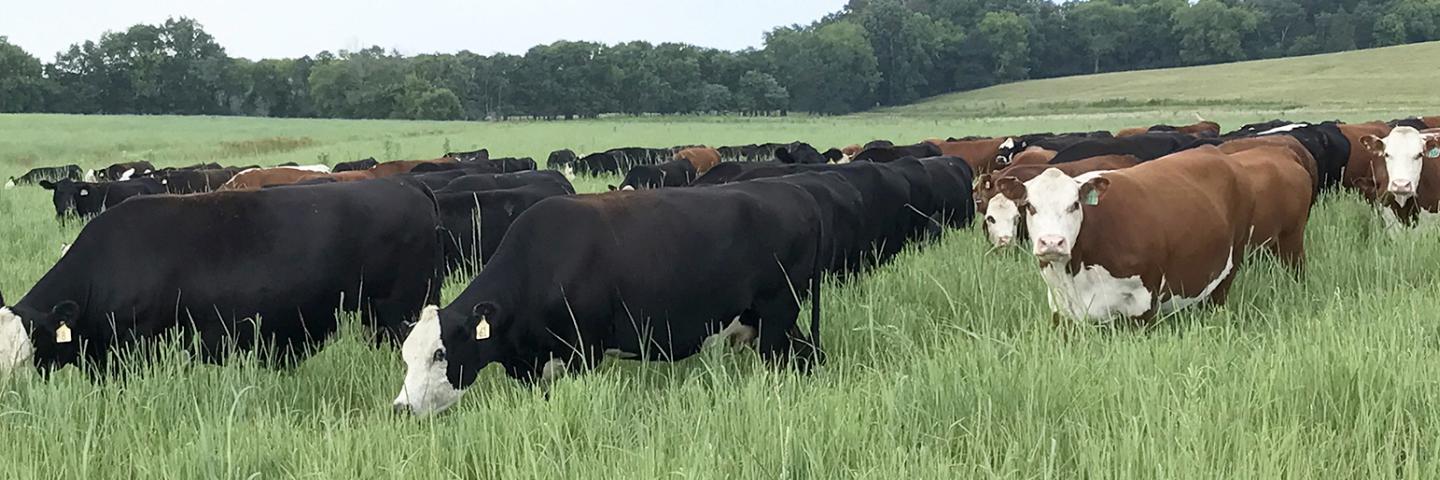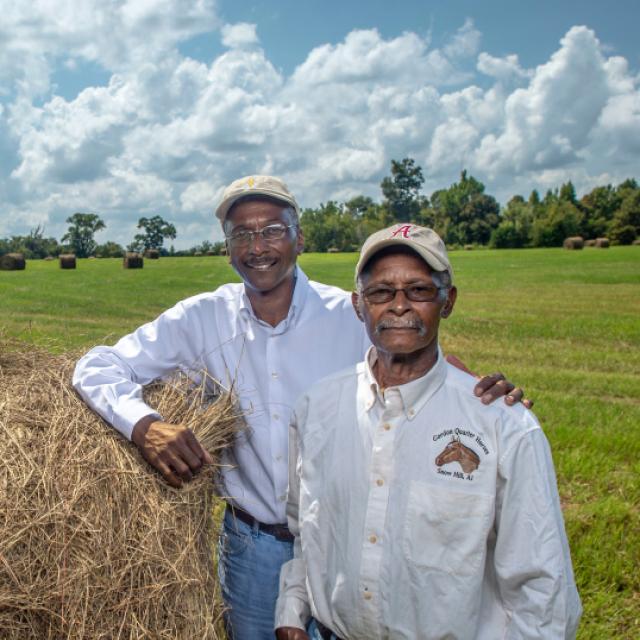Notice


The northern bobwhite is a state-identified target species of the Working Lands for Wildlife (WLFW) partnership, a collaborative approach to conserve habitat on working lands. This project is designed to help bring back the quail that were once an integral part of Virginia’s farming way of life.
State Program Overview
The Northern Bobwhite in Working Grasslands Initiative encourages livestock producers to establish productive warm season forages to support livestock grazing in the summer months. By sustainably increasing summer forage production for grazing livestock, farmers can achieve their production goals while simultaneously providing large acreages of prime habitat for ground nesting birds and other wildlife.
Why It Makes Sense
The northern bobwhite (Colinus virginianus) is often referred to as an “edge” species, seeking shelter where crop fields intersect with woodlands, pastures, and old fields. Over the last 60 years, population expansion combined with changes in land management practices have resulted in significant losses of desired quail habitat and diminished bobwhite populations by more than 80 percent.
Leading researchers like Dr. Pat Keyser from the University of Tennessee's Center for Native Grasslands Management have documented the wildlife benefits of managed grazing on these native summer forages, concluding that this approach actually enhances the habitat for the ground nesting birds.
Bobwhite quail are also a state-identified target species of the Working Lands for Wildlife (WLFW) partnership, a collaborative approach to conserve habitat on working lands. This WLFW project is designed to re-establish habitat on working lands to help bring back the quail that were once an integral part of Virginia’s farming way of life.
Who is Eligible to Participate
If you have grazing land in Virginia, you can apply to participate in the program. However, NRCS has established the following focal areas for targeted habitat restoration activities: Augusta, Bland, Botetourt, Charlotte, Culpeper, Fauquier, Halifax, Madison, Orange, Pittsylvania, Rappahannock, Rockingham, and Wythe.
Eligible producers can get technical and financial assistance to implement various conservation practices to address habitat loss in much of the bobwhite range while maintaining or improving livestock production on their lands.
How It Works
This new concept of fully integrating wildlife into grazing lands offers a "win-win" for participating producers by enabling them to continue grazing on land with installed wildlife practices. Check out this Sept. 1, 2017, spotlight on Virginia Farming (Ag Insights Segment, 10:00 on counter) and the video below to learn more.
How to Get Started:
- Contact your local NRCS office to sign up for the WLFW Program.
- Schedule a farm visit with your district conservationist, grazing specialist and private lands biologist.
- Define your goals and outline your plan.
- Finalize plan details to schedule practice implementation.
- Be prepared for the early application ranking planned this fall.
Learn More
Use the links below to check out related publications, presentations and short videos on warm season grass establishment and management available on the Center for Native Grasslands Management website.
State Contacts:
Jeff Jones, State Biologist
PH: 804-287-1636 | Email: jeffray.jones@usda.gov
J.B. Daniel, Forage and Grassland Agronomist
PH: 434-392-4171, ext. 115 | Email: j.b.daniel@usda.gov
Ready to get started?
Contact your local service center to start your application.
How to Get Assistance
Do you farm or ranch and want to make improvements to the land that you own or lease?
Natural Resources Conservation Service offers technical and financial assistance to help farmers, ranchers and forest landowners.

To get started with NRCS, we recommend you stop by your local NRCS field office. We’ll discuss your vision for your land.
NRCS provides landowners with free technical assistance, or advice, for their land. Common technical assistance includes: resource assessment, practice design and resource monitoring. Your conservation planner will help you determine if financial assistance is right for you.
We’ll walk you through the application process. To get started on applying for financial assistance, we’ll work with you:
- To fill out an AD 1026, which ensures a conservation plan is in place before lands with highly erodible soils are farmed. It also ensures that identified wetland areas are protected.
- To meet other eligibility certifications.
Once complete, we’ll work with you on the application, or CPA 1200.
Applications for most programs are accepted on a continuous basis, but they’re considered for funding in different ranking periods. Be sure to ask your local NRCS district conservationist about the deadline for the ranking period to ensure you turn in your application in time.
As part of the application process, we’ll check to see if you are eligible. To do this, you’ll need to bring:
- An official tax ID (Social Security number or an employer ID)
- A property deed or lease agreement to show you have control of the property; and
- A farm number.
If you don’t have a farm number, you can get one from USDA’s Farm Service Agency. Typically, the local FSA office is located in the same building as the local NRCS office. You only need a farm number if you’re interested in financial assistance.
NRCS will take a look at the applications and rank them according to local resource concerns, the amount of conservation benefits the work will provide and the needs of applicants. View Application Ranking Dates by State.
If you’re selected, you can choose whether to sign the contract for the work to be done.
Once you sign the contract, you’ll be provided standards and specifications for completing the practice or practices, and then you will have a specified amount of time to implement. Once the work is implemented and inspected, you’ll be paid the rate of compensation for the work if it meets NRCS standards and specifications.

